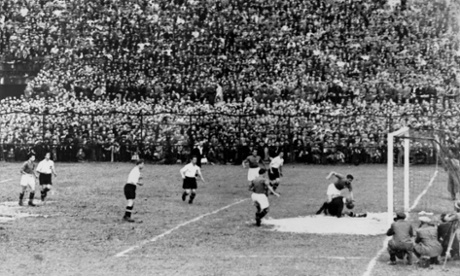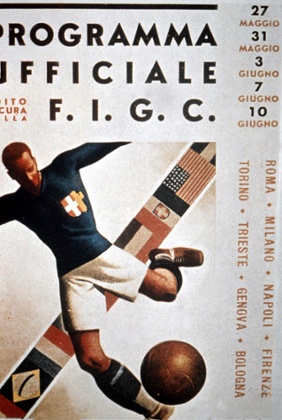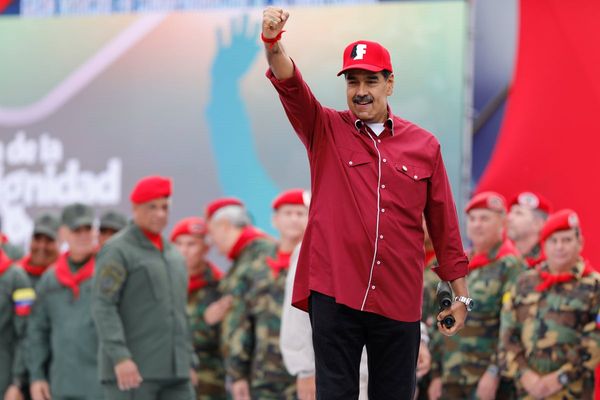
In many respects, Aldo ‘Buff’ Donelli had the best of both worlds.
He not only was a football hero, but the Morgan, Pennsylvania native turned out to be a futbol hero as well.
He starred at college football and became the only person to coach at the collegiate and professional levels at the same time. He also turned in one of the most scintillating performances in US national team history before there was much of a history to write home about.
With the Americans and Mexicans preparing for another border clash in San Antonio, Texas on 15 April, it is appropriate to tell the story of Aldo ‘Buff’ Donelli for what he accomplished in the first encounter between these two budding rivals in a World Cup qualifying match in Rome, Italy on 24 May 1934, three days before the main event kicked off. He scored four goals in a 4-2 USA victory.
Donelli turned out to be a sportsman for many seasons. He decided on pursuing a career as a coach in football, although he admitted on several occasions soccer was his main passion; he continued playing in amateur leagues into his 30’s.
“Soccer had to take second fiddle from the people I was around most of the times,” he once said.
Born on 22 July 1907, Donelli started playing soccer in the western Pennsylvania coal-mining area when he was 15.
Donelli – some newspapers spelled his last name as Donnelli – forged a reputation as lethal goal-scorer. As a 19-year-old he tallied four times in Cuddy’s 10-3 triumph over Westinghouse in the second round of the West Penn Cup on 31 October 1926. Playing for Morgan Strasser, Donelli led the Pittsburgh area in scoring from 1922 through 1928.
While wearing the colors of the Heidelberg Soccer Club in 1929, he struck five times in a 9-0 win over the First Germans of Newark in the National Amateur Cup final in Irvington, New Jersey. Some reports had Donelli scoring his goals within an eight-minute span, though that could not be confirmed. Regardless, news of Donelli’s exploits reached Preston North End of the English Football League, which reportedly had promised him a contract.
Donelli had a full plate with another brand of football, turning heads as captain and as a 5ft 7in, 170lb halfback and ambidextrous kicker for Duquesne University. His duties included punting – his kicking played a vital role in a 12-6 upset of Washington & Jefferson College in 1928. He also was known to drop-kick a field goal (while adding a point-after touchdown as well) in a 10-0 victory over St Thomas College on Oct. 6, 1928.
‘Soccer Develops Duquesne Star Into Greatest Kicker In Football’, read the headline in the 16 October 1929 edition of The Evening Standard in Uniontown, Pennsylvania. Some newspapers gave him an alliterative nickname: ‘Booting Buff’. There also were reports that he wore a football shoe on his left foot and a soccer one on his right, although they could not be confirmed.
Just part of a growing legend.
Duquesne coach Elmer Layden, star fullback of Notre’s Dame’s famed ‘Four Horsemen’, embraced Donelli’s unique kicking ability.
“Two footed kickers have greater value than the spectator believes,” Layden told the Altoona (Pennsylvania) Mirror. “Recall the occasions you have been a safety man trying to catch left-footed punts. The difficulty of handling left-footed spirals comes from the fact that most men are better right side runners. They catch ordinary spirals with the ball drafting into them, giving them a start. With the left-footed spirals the ball slides away from the natural running position, almost invariably demanding that the catcher stop and then start again before running the ball back.”

After helping the Dukes to 8-1 and 9-0-1 records in his junior and senior years, respectively, Donelli became an assistant coach, aiding Layden Saturdays, pursuing his true passion Sundays.
Donelli wasn’t able to play in the professional American Soccer League, missing out on the 1930 World Cup. Four years later, however, opportunity knocked. At the age of 26 – considered prime time for international strikers – Donelli took part in a three-game tryout.
It’s funny how life works. On 8 April 1934, Donelli probably hit a career low point, missing two penalty kicks, banging them off the post in Curry’s 2-1 defeat to Gallatin. A day later, he received news from US Football Association that he had made the team. He was told to report the Philadelphia for training 26 April and that the team would depart New York for Italy via boat 5 May.
The Americans arrived nine days later. Their first practice was a baseball, not a soccer, game.
In one scrimmage, according to Tony Cirino’s book, ‘US Soccer vs. the World’, Donelli started with the second team and scored a goal in the first half. He was moved to the first team for the second half and tallied the equalizer.
In a scenario that would not dare be repeated in today’s world of mega-hype, a final qualifier was held only three days prior to the World Cup at Stadio PNF in Rome.
The US submitted its qualifying application to FIFA late. FIFA allowed the Americans in with the stipulation they would have to play against the North American qualifying winner, Mexico. This was before the Mexicans became a Concacaf power. (This was only their ninth international match and the Americans’ 15th.)
Donelli was an 11th-hour addition the lineup on the insistence of star Billy Gonsalves.
“There was a clique among the New England and St. Louis players and they wanted me out of the lineup,” Donelli was quoted in US Soccer vs. the World. “Only later I was told that Bill Gonsalves went to [coach Elmer] Schroeder and told him. ‘If you don’t play Donelli, I’m not playing.’ “
Donelli played, putting on a one-man show before 10,000 spectators and Italian leader Benito Mussolini. He connected off a long pass after defender Edward Czerkiewicz’s interception in the 15th minute. After Mexico equalized seven minutes later, Donelli broke a 1-1 deadlock with a goal in the 30th minute off a William McLean feed.
Mexican Lorenzo Camarena was ejected in the 59th minute for trying to stop Donelli with his hands as the American striker raced toward the goal.
Donelli took advantage of extra player in the 73rd minute as his third goal, a breakaway after a pass from Werner Nilsen. After the Mexicans moved within 3-2, Donelli was at it again in the 87th minute, taking a pass from Thomas Florie and fired a shot between two defenders. Donelli could have had five goals, but he missed a penalty kick (an interesting aside: the New York Times credited Florie with a hat-trick and Nilsen with another goal).
“Mexico had a team that was pretty equal to ours,” Donelli was quoted in the book. “But they were not very quick. They had a very, very deliberate style of attack. There was not a whole lot of imagination; it was a predictable attack. And if you did anything. If you moved a wee bit, it would put them off balance. I was just able to go around the man very easily.”
The Americans’ gift for besting Mexico was a quarterfinal-round encounter with eventual World Cup champion Italy in the tournament opener. The Italians vanquished the USA in a 7-1 romp, the worst result in American World Cup history.
Quite appropriately, Donelli, in his second and last international match, scored the lone USA goal.
“The Italian team that year was probably the best international team in the world,” he was quoted in the book. “Monti! I can still see him. He was on top of me. You know, because I scored four goals against Mexico Monti would not let me alone. He was tough and he was a big man.”
He was referring to midfielder Luis Monti.
In fact, Donelli was so impressive against Italy that he was offered $5,000, a princely sum in those days, to play in Italy. He turned it down.
No one realized it at the time, but the US-Mexico confrontation turned out to be the last time the USA defeated its neighbors for 46 years – a 2-1 qualifying victory in Fort Lauderdale, Fla. on 23 November 1980 before the series turned into one of the world’s great international rivalries.
Donelli returned to the states, retiring as an international player with an astounding strike rate of 2.5 goals per game and began a rather impressive resume in American gridiron football. He was named Duquesne coach, guiding the Dukes to undefeated seasons in 1939 (8-0-1) and 1941 (8-0-0), the latter in which Dukes surrendered but 21 points, a mark matched only once in college ball since then. The Dukes finished in the Associated Press top 10 poll twice.
Leave it to Donelli to make more history as a coach. In 1941, he guided the NFL’s Pittsburgh Steelers and Duquesne at the same time. Donelli followed his old schedule of college football on Saturday and another pastime on Sunday.
“It was exhausting, but when you’re young [34], you can do a lot of things,” Donelli told the Pittsburgh Press in 1989. “I’d coach the Steelers in the morning at St. Vincent. ... I would finish with them about 12 or 12.30, jump in the car, have a bite to eat and drive to Duquense. I would get my athletic duties out of the [way] from one to three and then go to football practice.
“I would finish with them around six, jump in my car and go back [home].”
Five games into the NFL season – all losses – was he was asked to resign by Layden, who had become NFL commissioner. Layden felt the dual roles were not good for his league.
“Before I signed to coach them, I had an agreement with the Steelers that if there was a great improvement I would go with them,” Donelli told the Press. “But if Duquesne was in a position to do something, I would go with them. Art Rooney [team owner] understood the whole thing.”
After serving in the Navy in World War II, Donelli still had that winning touch as he coached the Cleveland Rams in the NFL and Boston University and Columbia University. BU has honored a senior each year with the Aldo ‘Buff’ Donelli award and Columbia’s intercollegiate athletics weight room is named after him.
There are no awards named after Donelli in US Soccer, at least not yet, although he was inducted into the National Soccer Hall of Fame in 1954. Only one other player has equaled his achievement – a hat-trick in his first international match – by current New York Red Bulls midfielder Sacha Kljestan in 2009.
Donelli, who passed away at the age of 87 on 9 August 1994, lived long enough to watch the USA host the 1994 World Cup, six decades after he made some World Cup history of his own.







